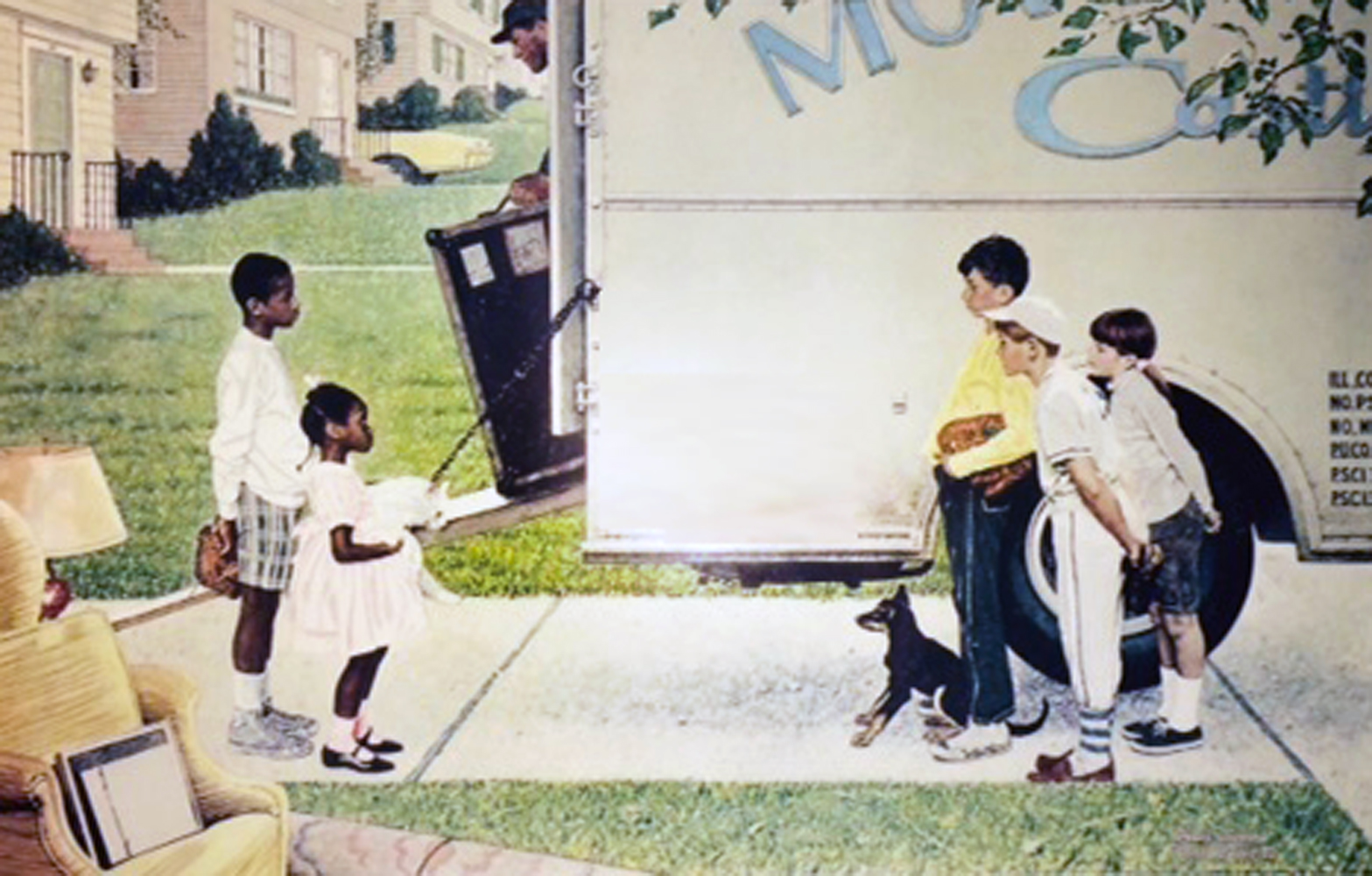"Being a Negro in the middle of a white neighborhood is like being alone in the middle of a crowd." (Mrs. Jacqueline Robbins, Chicago suburb Park Forest)
In 1967, Look magazine interviewed Mrs. Jacqueline Robbins for an article titled Suburbia. In 1962, the Robbins were the second black family to move into the all white Chicago suburb of Park Forest, the first having already departed. Things did not bode well for the Robbins: when they first arrived they discovered a newly built face, the far side painted white, the near side painted black. It was erected by the neighbour who did not want to look at them. "Being a Negro in the middle of a white neighborhood is like being alone in the middle of a crowd," said Mrs. Robbins. (http://www.mrmosconi.com/negro.html)
The public reaction to the integration of American cities was mixed. Some rejected it outright. Others applauded it on paper, but they did not react well once integration knocked on their door. More often than not it was adults who protested integration, not children. In fact, one Detroit neighbourhood even built a wall to prevent the white children from playing with the black children.
Norman Rockwell painted Moving Day (The Saturday Evening Post, May 17, 1967) as a reaction to the integration of the Chicago suburb. Two black children stand in the driveway of their new home. Three white children look at them with curiosity. The situation looks promising if not for the adult peering from behind a window curtain.

No comments:
Post a Comment